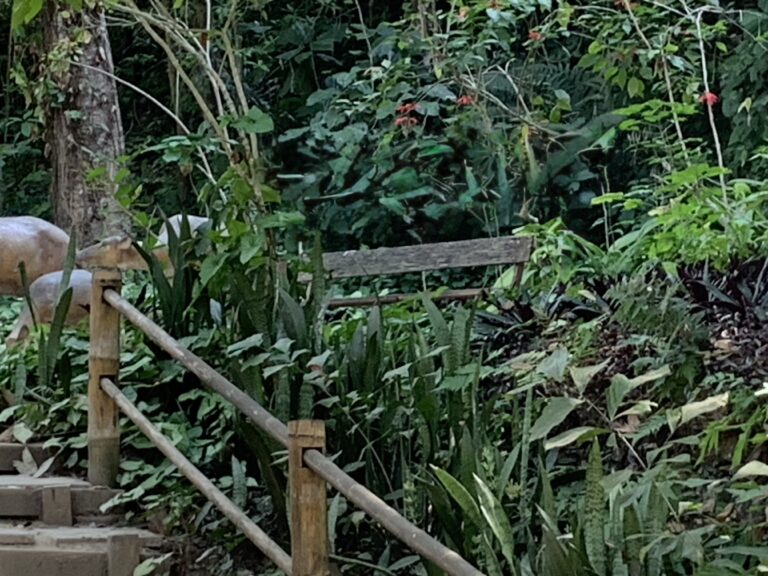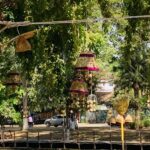aka Saigon
Saigon is a city I always wanted to see. During the Vietnam War, I used to imagine journalists holed up in hotel rooms, busy typing or telexing their foreign correspondent reports back to the West.
My father was based in Saigon for about 18 months during the tail end of the Vietnam War, and my imaginings, along with Dad’s anecdotes, instilled a deep curiosity in me. So, finally, arriving in this grand city fulfilled one of my girlhood travel dreams.
Of course, things have changed dramatically five decades after the end of that infamous war. HCMC is now a modern, high-rise, neon-lit, pulsating city attracting people for work and play from around the world. It was a reverse culture shock arriving in this 21st-century city after two and a half weeks living in historic parts of Vietnam.
Travelling by taxi through the chaotic traffic, from the airport, I was immediately struck by the beautiful acoustic guitar “statue” positioned front and centre on a main arterial roundabout as we entered the city centre.
My curiosity piqued, I was determined to discover why a city, especially in Southeast Asia, would have an acoustic guitar as a symbol. Once I read up on the history of why this is so, it made sense why a larger than life statue takes pride of place in the city centre. The story is a simple one, about how music and the instruments that make it have no borders.
The story starts on Nguyen Thien Thuat Street, named “Guitar Street” by musicians across Vietnam. It is a street of thirty or so shops renowned for producing beautiful, handmade acoustic guitars and traditional Vietnamese instruments. These guitars and the luthiers that make them are famous amongst the worldwide acoustic guitar fraternity for their affordability and high quality.
And that, my friends, is why a (larger than) life-like, strategically placed acoustic guitar greets all visitors to Saigon.
Digs – A short ride from the guitar statue, our taxi dropped us off at our hotel. Warmly greeted, we settled in and headed to the beautifully appointed rooftop bar. We were rewarded with soft sunset views of the city as we relaxed with our drinks and regrouped after a long day of traveling. (Well, we waited for over an hour at the airport for our transport, which never turned up.) Another travel story for another time!
The rooftop bar had a friendly, comfortable vibe. It was adorned with flowering Frangipani trees, scenting the air with their sweetness, and red hanging softly lit lanterns. Music played while a few guests enjoyed cocktails and the swimming pool.
We propped ourselves on barstools and enjoyed being entertained, watching the energetic, very willing and patient barman “Duey” mix cocktails by the dozen while charming the customers with adorable and funny stories about his life, his favourite music (Prince), and his ambitions to one day own a bar.
Eats – As it turned out, the hotel didn’t have a restaurant, so we quickly needed to find a place to eat. Staff recommended an authentic Vietnamese restaurant walking distance away, which provided very well-priced Vietnamese meals and excellent service. Tick. Ganh Truly Vietnamese Cuisine.
As it happened, not having an on-site restaurant was fortuitous because it forced us to explore this busy city’s streets every day to find places to eat.
HCMC provides some of the best and most varied eating places I have ever experienced. There are high-end restaurants, little local unadorned cafes, character-filled owner-operated small eateries, and family places. The city conveniently caters to all needs and tastes.
A fellow traveler recommended we try “The Racha Room,” an exquisite bar and restaurant with a Vietnamese tapas menu. We were told bookings were essential, so having done that, we arrived early to enjoy pre-dinner cocktails, stylishly served in champagne flutes on a tray with fresh flowers.
We ordered crumbed seared tuna with fresh sliced chillis and local Vietnamese dipping sauce. We also had Vietnamese prawn dumplings, which were squishy and piping hot. Steamed, then crumbed and deep fried, they were served with wedges of lime and fish dipping sauce. It was undoubtedly one of the best meals we had enjoyed. The experience was especially memorable not only because of the quality of the food, but also because of the service, and the gritty, brave and tasteful ambiance.
Another night we tried Italian, (I know, in Saigon), in a charming cafe literally around the corner from our digs. Ciao Bella, owned and operated by a Vietnamese couple who obviously, (given the quality of the food), possess a passion for Italian food.
It was a treat to eat their delicious homemade lasagna, spaghetti marinara, and, on our second visit, fresh mushroom and mozzarella pizza. All the food was as good as anything we tried in Italy.
A welcome bonus was their wine list. With a much-appreciated chardonnay on offer, the list was extensive, thoughtful, and exciting. In SE Asia, it was an unusual experience to find a wine menu that didn’t sell only Sav Blanc or “house white and red” wines.
I wouldn’t, however, expect to see a wine list with my street food order. Although a fresh fruit smoothly or beer wouldn’t be out of the question. Street food in Saigon is less prolific than in Hanoi. But, there is, however, a famous Street Food street we did visit. Vinh Khanh Street, District 4 HCMC.
Apparently, the street is better at night. It wasn’t particularly vibrant or atmospheric in the middle of the day but with only one day left before heading south, we opted to try it for lunch. We enjoyed a beautifully made fresh Banh Mi . Devouring it while admiring a woman navigating her way down the road on a motorized cart fully laden with pots of neon bright bougainvillea. We were willing them not to tip over.
The following day – our last in this high-energy city we decided to try a local food cart, which we had spotted during our “on foot” ventures. We thought we were ordering a Banh Mi but, lost in translation the lady making the food couldn’t understand our request. A local, eating his lunch close by, thought he did and translated what he thought we were asking for, and she happily presented us with one of Saigon’s best-loved food cart dishes: a Boh Ko, or beef stew. It was delicious, tasty, and full of nutritional goodies. She looked delighted with our appreciation. We were delighted at her delight—one of those special travel moments.
Attractions – Day one we hopped on a ferry and took a “Saigon River Cruise”. It transpired we were the only passengers. A slow chug up the river for half an hour and a slow chug back down to the start was enough time to see that, like most Asian rivers, The Saigon River is a very busy working river. The contrasting age old fishermen’s working lifestyle with the modern “packed to the gunnels” container ship, making her slow way up the river, to a nearby port, was a sight to behold.
The fisherman we saw likely lives in a little bamboo river hut amongst the reeds just below the rather grand mansions built on the river banks above him.
The tour provided city vistas, too. There is a clearer perspective on the city layout, bridges and modern high-rise buildings from the river.
Another way to see HCMC is from above. So we took a walk to one of the highest buildings in Saigon: the Saigon Skydeck.
We were carried in a high-speed lift to the 49th floor, where we exited onto a covered Skydeck. I stood back. I don’t have a head for heights. While he enjoyed promenading the 360-degree fully glass-sided deck, which offers a expansive views of the city and river. If you really don’t care about vertigo, it is well worth buying tickets. Thank goodness I had someone to take photos.
A trip to Saigon would not be complete without a few hours spent strolling around the War Remnants Museum. We spent hours there. I was so moved I needed to clear my head and find my way outside to breath in the fresh air .
My enduring touchstone is the white marble statue outside the now-closed children’s room. It depicts a little girl and a little boy looking at a white dove flying from his left hand while she holds a roosting white dove in her left hand. The sculpture is a beautiful and very poignant reminder of the destruction of war and the joyfulness of peace.
The War Remnants Museum deserves a story all to itself. Suffice it to say the museum has found a permanent place in my heart. I take my hat off to and send my gratitude for the fortitude, grace, humility, love and goodwill the people of Vietnam show to visitors in their beautiful country.
Tet – The annual Lunar Moon (Chinese ) or Lunar New Year (for the Vietnamese); celebrations occur throughout February, so we were in the midst of it. The festival attracts some 500 Chinese people plus locals every year into the centre of HCMC.
The evenings, especially, were eye-opening for the sheer joy and fun being experienced and the committed effort put into this considerable festival. We loved being part of the happy crowds dressed in costumes or beautiful, elegant clothing, busy making their way with family to their particular venue for the night.
To step off the “festivity wheel” and take a breath from the busyness of people, noise, and colour, we found our way to a rooftop bar where I was served the most giant cocktail I have ever seen. I’m sure it didn’t look that huge in the menu pic!
Presented in a massive brass wine goblet with carnations floating on top, the “Mighty Mekong” overwhelmed me with its audacious size—but not enough to not drink it! It was also an apt choice given that we were heading to The Mekong the next day and continuing our journey, to Cambodia via river ferry.



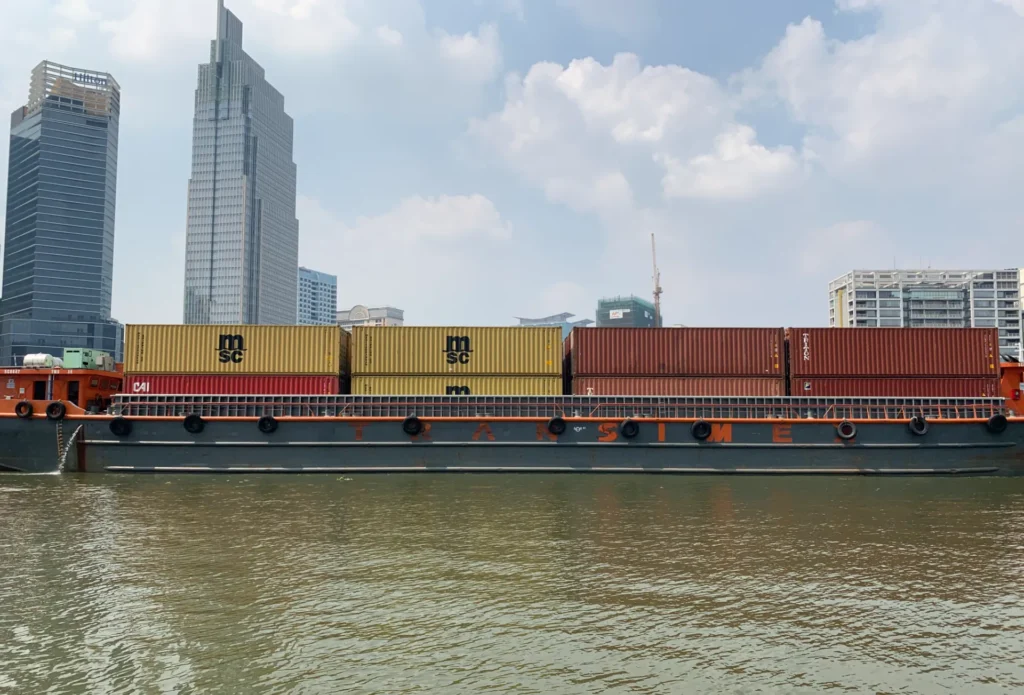













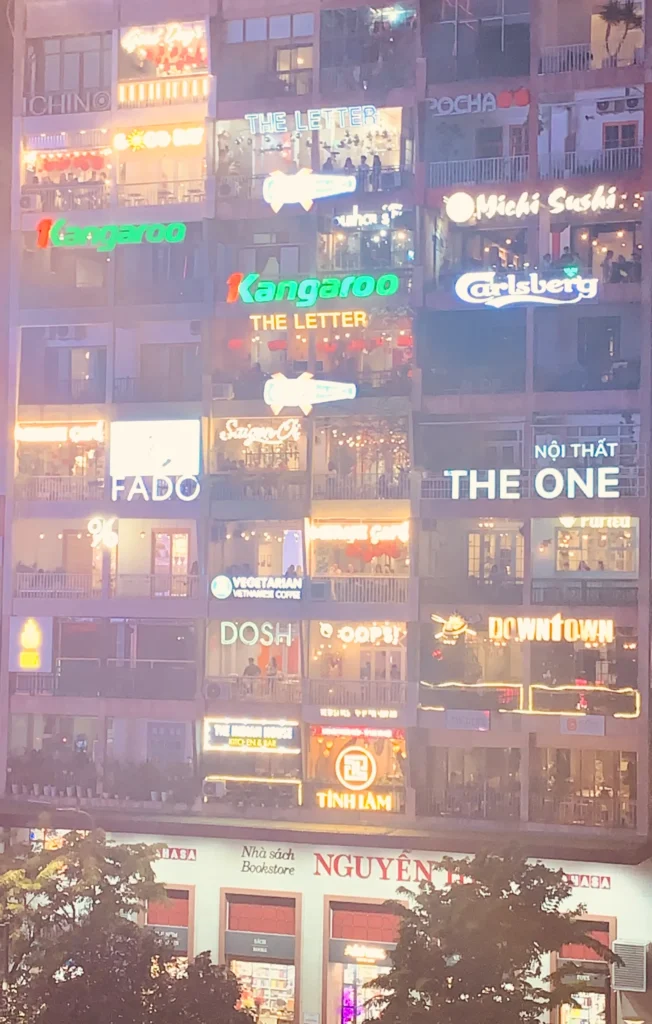



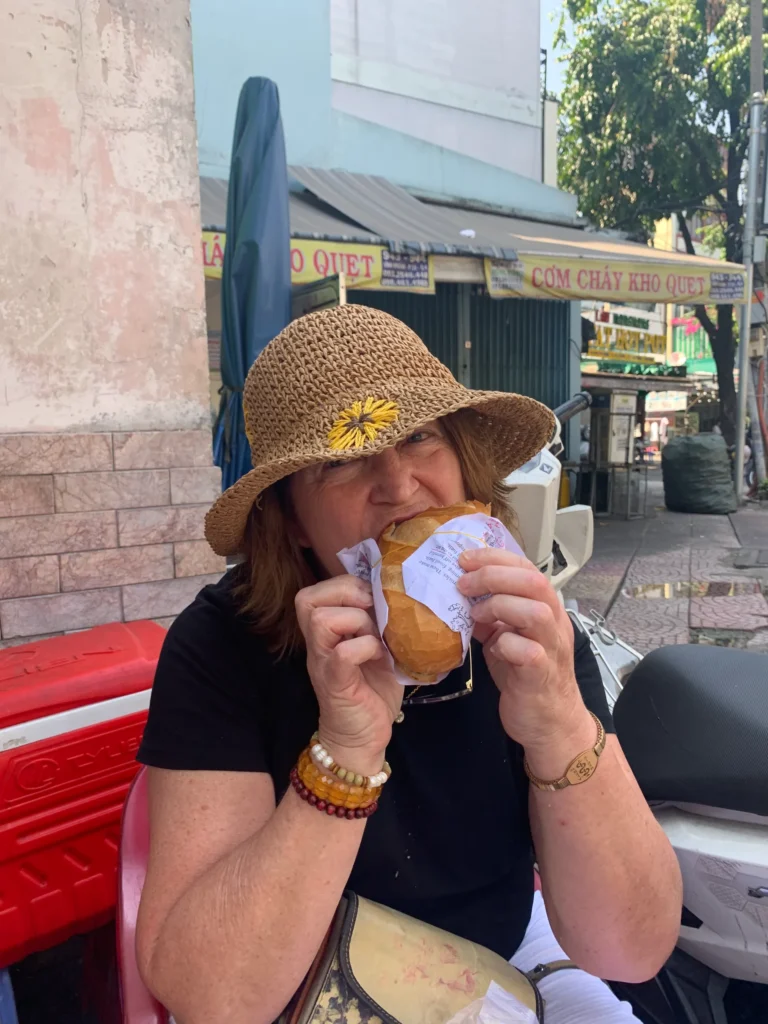





Additional MTR information
We flew Vietnam Airlines, Danang-HCMC . Bookings were made by the very helpful receptionist at our Danang hotel
We Stayed at the Silverland Jolie Hotel – HIGHLY recommended.
If you would like to find out more about HCMC, please contact janeco@mytravelroom.co.nz


